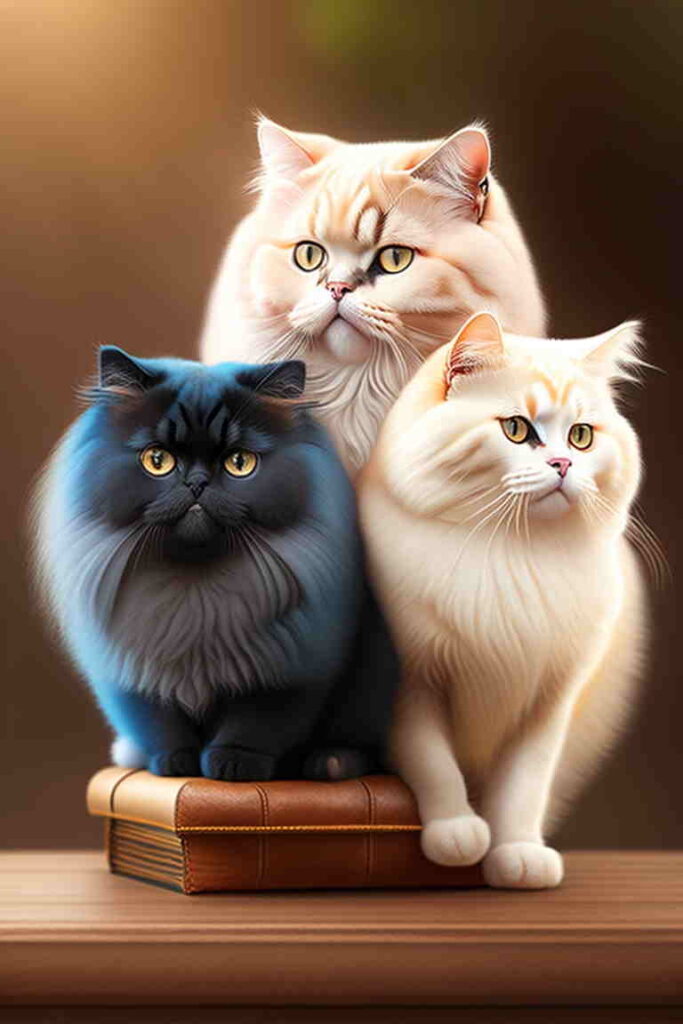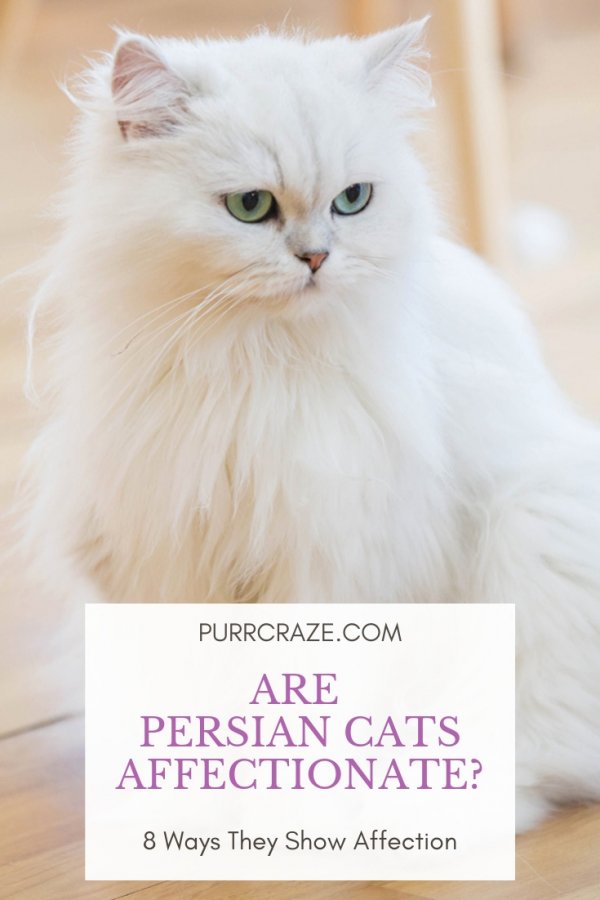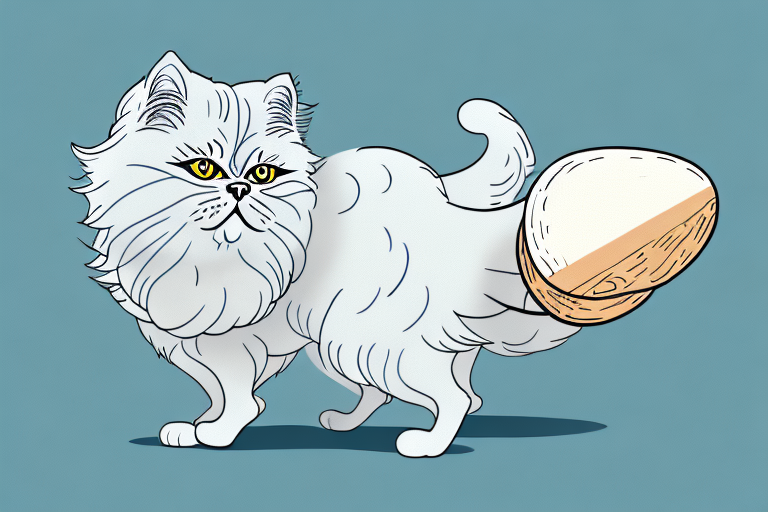Have you ever wondered how Persian cats interact with other pets? It’s a common question among pet owners who are considering bringing a Persian cat into their home. Well, you’re in luck because in this article, we’re going to explore the topic in detail and provide you with all the information you need. Whether you have a dog, a bird, or another cat, we’ll discuss how Persian cats typically behave around other animals and offer some tips for successful pet interactions. So, if you’re curious about how a Persian cat might get along with your furry friends, keep reading!
When it comes to Persian cats and their interaction with other pets, it’s important to understand their temperament. Persian cats are generally known for their calm and laid-back nature. They tend to be less active compared to some other cat breeds, and they often prefer a peaceful and quiet environment. This can make them more adaptable to living with other pets, as they are less likely to be aggressive or territorial. However, it’s still important to introduce your Persian cat to other pets slowly and gradually, allowing them to get used to each other’s presence. In the next section, we’ll dive deeper into specific tips and strategies for introducing Persian cats to different types of pets. So, if you’re interested in creating a peaceful and harmonious environment for your furry family members, stay tuned for more information in our upcoming article!
Persian Cats and Their Interaction with Other Pets
Persian cats are known for their exquisite beauty and luxurious coats. These elegant felines have captured the hearts of cat lovers all over the world. While Persian cats are often seen as regal and aloof, they can also have a playful and affectionate side. In this article, we will explore the history of Persian cats, their physical characteristics, personality traits, and their compatibility with other pets.

History of Persian Cats
Origins of Persian Cats
The exact origins of Persian cats are shrouded in mystery. It is believed that these felines originated in Persia, which is now modern-day Iran, hundreds of years ago. They were highly regarded and treasured for their beauty and grace. Persian cats were often kept by nobility and royalty, and their status as prized pets further added to their appeal.
Breed Development
The development of the Persian breed as we know it today is credited to European breeders. In the 17th century, Persian cats were brought to Europe by traders returning from Persia. These cats quickly gained popularity among cat enthusiasts in England and France. Breeders began selectively breeding Persian cats to enhance their distinctive features, such as their long, flowing coats and round faces.
Popularity of Persian Cats
Over the centuries, Persian cats have remained a popular breed worldwide. Their stunning aesthetics and calm nature have made them highly sought after by cat lovers. Persian cats are often seen as symbols of elegance and sophistication. Their popularity can be attributed to their regal appearance, gentle demeanor, and ability to bond well with their human companions.
Physical Characteristics
Distinctive Features
Persian cats are most recognizable for their long, luxurious coats. Their fur is dense and silky to the touch. Persian cats come in a wide range of colors and patterns, including solid colors, tortoiseshell, tabby, and bicolor. Their prominent features include large, round eyes that can be various shades of blue, green, or copper.
Coat Types and Colors
Persian cats have two main coat types: the show coat and the traditional or doll face coat. The show coat is long and requires regular grooming to prevent matting. The traditional coat is shorter and easier to maintain. Persian cats come in a myriad of colors, including white, black, blue, cream, silver, and golden.
Face and Body Structure
The distinctive face of a Persian cat is characterized by a flat, round shape with a short nose and a prominent forehead. Their bodies are medium to large in size, with a sturdy build and a deep chest. Persian cats have short legs and a sweet and innocent expression that adds to their overall charm.

Personality Traits
Gentle and Calm Nature
Persian cats are known for their gentle and calm temperament. They have a serene and relaxed presence that makes them wonderful companions. These cats are generally not as active as some other breeds and are content to curl up in a cozy spot for most of the day. Persian cats are ideal for individuals or families looking for a calm and peaceful pet.
Independent yet Affectionate
Despite their calm demeanor, Persian cats are also known to be affectionate and loving. They form strong bonds with their human family members and enjoy being petted and cuddled. However, Persian cats also have an independent streak and appreciate having their own space and alone time.
Playfulness and Curiosity
Contrary to popular belief, Persian cats are not always sedentary. While they may not be as active as some other breeds, they still have a playful side. Persian cats enjoy interactive toys and games that stimulate their curiosity. They may spend hours batting around a toy mouse or chasing a laser pointer.
Care and Grooming
Daily Brushing and Detangling
One of the most important aspects of caring for a Persian cat is regular grooming. Their long, flowing coats require daily brushing to prevent matting and tangling. Use a wide-toothed comb or a specialized cat brush to gently remove any knots or tangles. Regular grooming sessions also help to keep the coat clean and free from debris.
Eye and Ear Cleaning
Due to their facial structure, Persian cats are prone to eye and ear issues. It is important to clean their eyes daily to prevent tear stains and debris buildup. Use a soft cloth or a cotton ball soaked in warm water to gently wipe away any discharge. Additionally, check and clean their ears regularly to prevent wax buildup or infections.
Bathing and Nail Trimming
Persian cats may require occasional bathing to keep their coats clean and fresh. Use a mild, cat-specific shampoo and ensure that their fur is thoroughly rinsed to avoid skin irritation. Additionally, regular nail trimming is essential to prevent overgrowth and discomfort. Use cat nail clippers or ask your veterinarian for guidance on how to trim their nails safely.

Nutrition and Feeding
Balanced Diet for Persian Cats
To ensure the health and well-being of your Persian cat, provide them with a balanced and nutritious diet. Choose high-quality cat food that is specifically formulated for long-haired cats. Persian cats have a lower activity level than some other breeds, so it is important to monitor their calorie intake to prevent obesity.
Food Ingredients to Avoid
Some food ingredients can be harmful to Persian cats. Avoid feeding them foods that contain onion, garlic, chocolate, caffeine, and alcohol, as these can be toxic to cats. Additionally, certain human foods, such as grapes, raisins, and foods high in salt or sugar, should be kept away from your Persian cat’s reach.
Special Considerations for Health Issues
Persian cats are prone to certain health issues, such as polycystic kidney disease (PKD) and hypertrophic cardiomyopathy (HCM). Regular veterinary check-ups are crucial to monitor their overall health and detect any potential issues early on. Your veterinarian may recommend specific dietary measures or supplements to support their kidney and heart health.
Health and Common Conditions
Respiratory Problems
Persian cats have a brachycephalic or flat face, which can lead to respiratory issues. Their shortened nasal passages make it harder for them to breathe, especially in warmer weather or when stressed. It is important to keep their environment cool, provide proper ventilation, and monitor their breathing to ensure they are not struggling to catch their breath.
Dental Issues
Dental hygiene is important for Persian cats to maintain good overall health. Their facial structure can make them more prone to dental problems, such as gum disease and tooth decay. Regular dental care, including brushing their teeth or providing dental treats, can help prevent these issues and keep their pearly whites in top shape.
Eye Disorders
Persian cats are more susceptible to certain eye disorders, such as cherry eye, entropion, and cataracts. These conditions can cause discomfort and may require medical intervention. Regular eye examinations by a veterinarian are essential to monitor and address any eye-related issues promptly.

Exercise and Playtime
Indoor vs Outdoor Activities
Persian cats are generally best suited for indoor living. Their long, flowing coats are easily compromised by the elements, and they can be more susceptible to injuries and diseases when exposed to the outdoors. Providing them with a stimulating indoor environment, complete with scratching posts, climbing trees, and interactive toys, can help keep them physically and mentally engaged.
Interactive Toys and Games
Persian cats enjoy interactive toys and games that challenge their hunting instincts. Feathered toys, catnip-filled mice, and puzzle feeders are great options to keep them entertained. Regular playtime sessions with their human companions can also help strengthen the bond between you and provide much-needed mental stimulation.
Exercise Requirements
Persian cats have relatively low exercise requirements compared to some other breeds. However, it is still important to encourage them to engage in physical activity to maintain a healthy weight and prevent muscle loss. Short play sessions, gentle exercises, and encouraging them to chase toys or laser pointers can help promote their overall well-being.
Training and Behavior
Litter Box Training
Litter box training is relatively easy with Persian cats, as they naturally have clean instincts. Provide a large litter box with low sides to accommodate their fluffy coats and make it easily accessible to them. Keep the litter box clean by scooping it daily and fully replacing the litter every week to ensure their comfort and hygiene.
Managing Separation Anxiety
Persian cats are known to form strong bonds with their human companions and can be prone to separation anxiety when left alone for extended periods. Provide them with plenty of toys and interactive activities to keep them occupied in your absence. Consider having a designated safe space or a comfortable bed where they can retreat to when feeling anxious.
Discouraging Scratching Furniture
Like any other cat, Persian cats need appropriate outlets for their natural scratching behavior. Provide them with a scratching post or a cat tree to redirect their attention away from your furniture. Regular nail trimming can also help minimize the damage caused by scratching.

Compatibility with Dogs
Introducing Persian Cats to Dogs
Introducing a Persian cat to a dog should be done gradually and carefully. Start by allowing them to sniff each other’s scents through a closed door. After a few days, allow visual contact through a baby gate or a cracked door. Gradually increase their interaction under supervision until they become comfortable with each other’s presence.
Building a Harmonious Relationship
Building a harmonious relationship between a Persian cat and a dog requires patience and positive reinforcement. Provide separate spaces for each pet to retreat to when needed. Reward good behavior and create positive associations between the two by offering treats or praise when they interact calmly and respectfully.
Training Dogs to Respect Cats
If you have a dog that is not accustomed to being around cats, it is important to train them to respect your Persian cat’s boundaries. Teach them basic obedience commands, such as “sit” and “stay,” and reward them when they respond appropriately. Slowly introduce them to each other in a controlled manner, using leashes or barriers if necessary, to prevent any unwanted chasing or aggressive behavior.
Interaction with Other Cat Breeds
Socializing Persian Cats with Other Cats
Persian cats can generally get along well with other cat breeds if introduced properly. The key to successful socialization is gradual introductions and supervised interactions. Start by allowing them to smell each other’s scents through a closed door and gradually progress to visual contact and eventually face-to-face interactions.
Understanding Hierarchy Dynamics
Cats, including Persian cats, have a natural hierarchy and territorial instincts. It is important to let them establish their own hierarchy with minimal interference. Watch for signs of aggression or dominance, such as hissing, growling, or aggressive body postures, and intervene if necessary. Providing multiple food and water stations and separate litter boxes can help reduce potential conflicts.
Managing Multiple Cat Household
Managing a multiple cat household requires careful consideration of each cat’s individual needs. Provide separate resources, such as food bowls, water bowls, and litter boxes, to prevent competition and reduce potential stress. Regular play sessions and individual attention for each cat can help prevent feelings of neglect and promote harmony within the household.
Persian Cats and Small Pets
Introducing Persian Cats to Small Pets
Introducing Persian cats to small pets, such as rabbits or guinea pigs, should be done with caution. Allow them to sniff each other’s scents through a closed door and gradually progress to visual and supervised interactions. Never leave them unsupervised until you are certain that they can coexist peacefully.
Safety Measures and Supervision
When allowing your Persian cat to interact with small pets, always prioritize their safety. Small pets should have access to a secure enclosure or habitat that is inaccessible to your cat. Close supervision is crucial during interactions to prevent any potential harm to either the small pet or your Persian cat.
Creating a Bond between Cats and Small Pets
Creating a bond between your Persian cat and small pets requires patience and positive reinforcement. Allow them to interact under controlled circumstances and monitor their behavior closely. Reward positive interactions with treats and praise. However, it is important to remember that not all cats will be accepting of small pets, and it is vital to prioritize their safety.
Introducing Persian Cats to Children
Teaching Kids to Interact Safely
When introducing a Persian cat to children, it is important to teach them how to interact safely and respectfully. Demonstrate gentle petting and let them know to avoid pulling on the cat’s fur or tail. Supervise all interactions between younger children and cats to ensure that both parties are comfortable and safe.
Supervision and Boundaries
Even with well-behaved children, supervision is crucial when a Persian cat is interacting with kids. Set boundaries and establish rules, such as not bothering the cat when it is eating or sleeping. Teach children to recognize the cat’s body language and signs of stress or discomfort, and encourage them to give the cat space when needed.
Benefits of Growing Up with Cats
Growing up with Persian cats can offer numerous benefits for children. Cats can teach children about responsibility, empathy, and compassion. Interacting with cats can also provide emotional support and companionship for children, helping them develop social skills and reduce stress. However, it is essential to always prioritize the safety and well-being of both the child and the cat.
Traveling with Persian Cats
Preparing for Travel
Traveling with a Persian cat requires careful planning and preparation. Ensure that your cat has a properly sized and comfortable carrier or crate. Familiarize your cat with the carrier in advance and make it a positive space by offering treats or using pheromone sprays. Pack essential supplies, such as food, water, litter, and any necessary medications.
Choosing Suitable Carriers
When selecting a carrier for your Persian cat, choose one that provides adequate ventilation, is secure, and has ample space for them to move comfortably. Opt for carriers with removable tops or openings, as Persian cats may feel more at ease when they can see their surroundings. Soft carriers or hard plastic carriers with a cozy bedding option can provide added comfort.
Tips for Stress-Free Travel
To make travel less stressful for your Persian cat, create a calm and familiar environment inside the carrier. Place a familiar blanket or a piece of clothing with your scent inside to provide comfort. Limit food intake prior to travel to reduce the likelihood of motion sickness. Play soothing music in the car or use natural calming aids, such as pheromone sprays, to help alleviate anxiety.
Conclusion
Persian cats are truly one of a kind, with their beautiful coats, calm nature, and loving personalities. They can make wonderful companions for individuals and families alike. When introducing Persian cats to other pets, it is crucial to do so gradually and carefully to ensure a peaceful coexistence. With proper care, nutrition, and attention, Persian cats can thrive and bring joy and companionship to their human counterparts.
Frequently Asked Questions
-
Are Persian cats hypoallergenic?
- No, Persian cats are not hypoallergenic. They have long fur that can trap allergens such as dander, so individuals with allergies may still experience symptoms.
-
How often should I groom my Persian cat?
- Persian cats require daily grooming to prevent their long coats from matting and tangling. Regular brushing and occasional baths are necessary to maintain their coat’s health and appearance.
-
Can Persian cats go outside?
- Persian cats are generally best kept indoors to protect their coats and prevent potential injuries or exposure to diseases. If you want to allow your Persian cat outside, consider creating a safe and enclosed outdoor space for them.
-
How long do Persian cats live?
- Persian cats have an average lifespan of 12 to 16 years. With proper care, nutrition, and regular veterinary check-ups, they can live even longer.
-
Do Persian cats get along with other cats?
- Persian cats can get along well with other cats if introduced properly. Gradual introductions and supervised interactions are key to fostering a harmonious relationship between Persian cats and other feline companions.
-
Are Persian cats good with children?
- Persian cats can be a good fit for families with children, as they are generally calm and tolerant. However, supervision and teaching children how to interact safely and respectfully with cats are essential.
-
Do Persian cats require a lot of exercise?
- Persian cats have relatively low exercise requirements compared to some other breeds. Short play sessions and providing them with stimulating toys and activities can help keep them mentally and physically engaged.
-
How often should I take my Persian cat to the veterinarian?
- Regular veterinary check-ups are essential for the overall health and well-being of Persian cats. Annual examinations, vaccinations, and dental cleanings are important parts of their healthcare routine.
-
Can Persian cats be trained?
- Persian cats can be trained to some extent. While they may not be as responsive to commands as dogs, they can learn simple tricks and behaviors through positive reinforcement training.
-
What is the best way to travel with a Persian cat?
- When traveling with a Persian cat, ensure they have a comfortable and secure carrier. Familiarize them with the carrier in advance and make the travel experience as stress-free as possible by providing a calm and familiar environment inside the carrier.